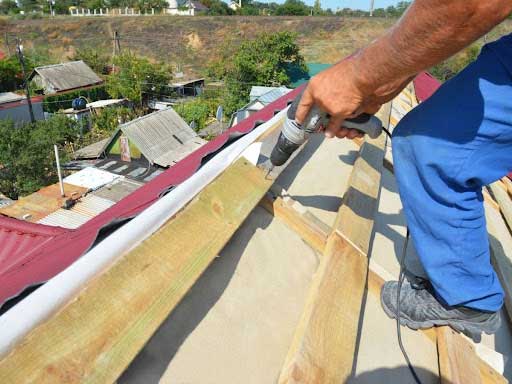Table Of Content:
- Metal roofing is a good choice for low-pitched roofs.
- A roofing contractor installed the Low Pitched Metal Roof.
- Benefits of Metal Roofing
Metal roofing was always considered a luxury that a select few property owners could only afford. This has changed. Only those who could afford to engage a professional roofing contractor to install the roof could do so successfully. However, more and more people are being attracted to the idea of completing their roofing on their own homes. The use of metal roofing on low-pitched roofs has proven to be the most effective solution. Metal sheets are bonded together and placed on the roof of low-pitched roofs to create a waterproof seal. As with any other material, there are advantages and disadvantages to having metal roofs. However, if you choose the best metal roofing option for your needs and environmental conditions, you will not have to worry about either or both.
Metal roofing is a good choice for low-pitched roofs.
Metal roofing is considered the best choice for low-pitched roofs because of the several advantages it provides, including the ability to withstand extreme weather conditions, the fact that it is lightweight and very durable, and the fact that it is non-combustible. These features increase the aesthetic value of metal roofing by enhancing its beauty and attractiveness.
Due to the fact that metal roofing is available in a number of metals such as aluminum, zinc, copper, and stainless steel, it is also considered the best choice for low-pitched houses. The metal is chosen under the surrounding surroundings and weather.
Metal roofing is incredibly durable and corrosion-resistant, making it an excellent choice. Because they are light in weight, they do not cause any damage to the roof’s internal construction elements. Metal roofing does not need to be replaced for more than 50 years after it is installed, and it is covered by guarantees for the same amount of time as well. Since it requires little maintenance, metal roofing is a cost-effective option. Furthermore, you will no longer have to be concerned about your roof anymore. Metal roofs are also resistant to bug infestations.
Since low-pitched roofs are mainly level or have reduced slopes, they need to have a mechanism for water to sweep down. This is further made easier because metal roofs are entirely safe in weather conditions, including rain, snow, hail, and extreme heat.
A roofing contractor installed the Low Pitched Metal Roof.
To avoid any future complications, such as drainage problems and other installation issues, homeowners should consult with professional contractors before installing a metal roof on their low-pitched roof. Doing so will help them avoid any future complications, such as drainage problems and other installation issues if they attempt to install the roof independently.

Benefits of Metal Roofing
Residential metal roofing is one of the fastest-growing divisions of the home improvement industry, with a market share that has more than quadrupled in the last decade. Today’s metal roofs provide homeowners with the opportunity to update their homes with long-lasting solutions. While other roofs rapidly lose their value as they age, metal roofs offer the following long-term advantages:
- Expected performance of 50 years or more
- Stunning designs to complement any home or community
- Panels that interlock for maximum wind resistance
- Resistance to fire
- By keeping homes colder, you can save energy.
- Low weight helps to maintain structural integrity and longevity.
Metal Roofing Has a Lot of Benefits
Metal roofs are extremely durable, withstanding winds of up to 140 mph without damage. Metal roofs can also withstand impact damage in some cases.
- Metal roofs are long-lasting — Metal roofs can last anywhere from 40 to 70 years, thanks to their resilience.
- Metal is fire-resistant, meaning it won’t catch fire or spark.
- Insect-resistant metal — Unlike other roof materials, metal does not attract insects. This is because metal can not hold moisture and thus cannot decay.
- Metal roofs are energy efficient — Because metal reflects heat, a metal roof can help you save up to 25% on your cooling bills.
- Metal roofs are environmentally beneficial — Metal roofs are frequently made from recycled materials, ranging from 25% to 95%, and are recyclable at the end of their lives.



